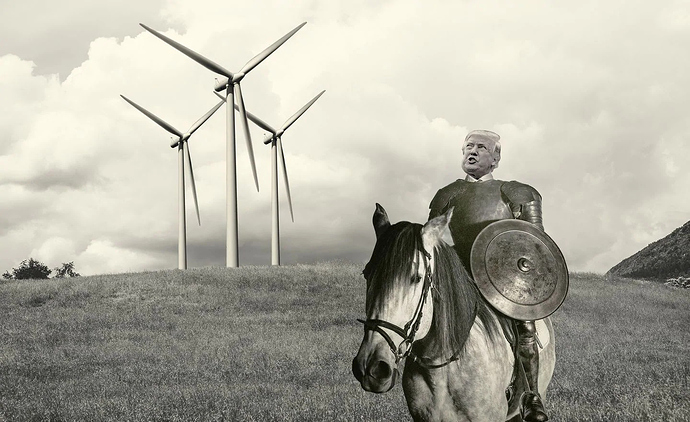Come on Biden, talk about T’s coal plan!

BAM!
She actually got in the question about leadership. I’m impressed!! Even tho’ we are in overtime.
Fabulous ending statement by Joe Biden! 


Wow…
What a holy load of lies coming from Trump and an impassioned Joe.
I think it was a clear win for Biden.
I thought T’s head would have  but did not.
but did not.
All things considered Kristen Welker/NBC did the best of all moderators.
Phew - done!
I swear what Trump does is a step beyond the Gish Gallop even. It needs its own name. It’s more like the Trump Clump – it’s so much it created a choke point and everything explodes.
But in fact, windows don’t have to get smaller to meet efficiency goals — they just have to get smarter. “This is 19th-century thinking, and we’ve got 21st-century solutions,” says Jacob Corvidae, principal of the Rocky Mountain Institute, which consults on energy-efficiency retrofits. Over the past decade in particular, windows have gone high-performance, thanks to triple or quadruple panes of glass, insulative measures like a layer of argon suspended between those panes, and heat-reflecting glazings (a 24k-gold coating does help a little, yet isn’t enough on its own). But windows are also becoming high-tech tools for managing warming and cooling, which can save even more energy. RMI’s own headquarters — which generates more energy in a year than it consumes — is located in Colorado at an elevation of 6,600 feet and does not have central heat. It stays comfortable largely because its designers employed large, southern-facing windows to maximize passive solar gain. The windows and shades are equipped with sensors to adjust for heat while still allowing daylight to flood in, cutting down on the need for extra lighting.
Yes, Trump “knows all about construction,” but his knowledge was mostly cultivated decades ago, when energy standards were vastly different. (Nearly two decades ago, for example, Australia instituted green-building recommendations that windows be either double-glazed or—yes!—made smaller.) This year, two of his New York buildings, Trump Tower and Trump International Hotel & Tower, scored Ds on the city’s new efficiency rating system, and he’s regularly called out for refusing to make window-upgrade retrofits to his properties, even though he did receive $1 million to do so on a property in White Plains in 2012. It’s plausible that de Blasio’s remark about glass towers stuck with Trump because it would have cost him money. “It’s much more expensive,” Trump’s ghostwriter said in his 2008 book. “The science has not been perfected yet and in some cases the savings cannot justify the huge cost. You spend a tremendous amount of money now, and it takes 40 years to get your money back” — although a report shows the White Plains investments paid for themselves within three years.
That’s why rebates are widely offered, many of them through cities and local utilities; although window upgrades can get expensive, the benefits go beyond the energy savings. Corvidae points to the Empire State Building, which RMI worked with a decade ago when the building went through one of the biggest such retrofits in New York City history. All 6,514 windows were upgraded and salvaged as part of an ambitious plan that ended up cutting the building’s energy use by one-third and recouping those costs three years later. The windows didn’t get any smaller in the process. Trump’s concerns might be different from his tenants’ but such changes would impact them both positively, says Corvidae. “He’s reacting to this as a landlord, not as someone who lives there. But this can be beneficial for landlords, too.”
What Trump is actually trying to do here is, once again, gin up irritation at rules, the way he does about mask wearing. Under the Trump administration, the EPA has rolled back nearly 100 environmental regulations meant to reduce emissions, lower energy usage, and save Americans money. Take energy-efficient light bulbs, for example, another regulated product he has complained about — along with low-flow showerheads and toilets. His EPA has delayed raising efficiency standards to a level that incandescent bulbs could not meet, and Trump often says he will “bring back” incandescent bulbs. His crowds cheer at that one, too.
The White House press office did not answer calls for comment.
This would seem necessary in the face of dramatic climate change, but would not sound right to say, Oil producing states - TX, PA and Oklanhoma. Some context needed.
Before the debate, President Trump said his advisers urged him to interrupt less and let Joe Biden talk more, the better to let the Democratic nominee slip up.
Toward the end of the debate, Trump may have gotten what he wanted — a Biden comment about closing down the oil industry that probably won’t play well in states up for grabs this November, such as Texas and Pennsylvania. But there’s also evidence that Trump is the candidate on the defensive when it comes to public opinion and climate change.
Here’s what happened:
Trump: “Would you close down the oil industry?”
Biden: “Yes. I would transition.”
Trump: “That is a big statement.”
Biden: “That is a big statement.”
Trump: “Why would you do that?”
Biden: “Because the oil industry pollutes, significantly. … Because it has to be replaced by renewable energy over time, over time. And I’d stop giving to the oil industry, I’d stop giving them federal subsidies.”
Trump: “Basically, what he is saying is he’s going to destroy the oil industry. Will you remember that, Texas? Will you remember that, Pennsylvania, Oklahoma?”
Biden: “He takes everything out of context. But the point is, we have to move toward a net zero emissions. The first place to do that by the year 2035 is in energy production. By 2050: Totally.”
Biden’s “yes” answer to closing down the oil industry was potentially serious enough for him to try to clarify his remarks to reporters later at the airport. He said he would stop giving money to the oil industry, rather than close it down entirely: “We’re not going to get rid of fossil fuels. We’re going to get rid of subsidies for fossil fuels.”
I don’t know how damaging that is. I think one of the things that really needs to be explained to people is that oil =! freedom for a lot of reasons, but also some people are pretty tired of being on fire.
I suppose it depends on how people (in PA specifically) “hear” those comments? Either way, Biden needs to be more clear and nuanced with his answer because saying “yes” leaves too much for interpretation
Agree with you on this. Biden kind of threw it in at the end and Trump tried to skewer him immediately. Yes, it is a complex issue. When we get to net-zero carbon emissions (by 2035 is it?) It will take a long process of weaning public use and changing over industry standards which takes a whole lot of ‘nuance’ as you say.
As someone who comes from PA, I can tell you that in the relevant parts of the state a not-insignificant percentage is one big underground coal fire and are still like “coal is fine.” They are not people he is going to reach on this particular issue. Nothing he could have said that isn’t “bring back coal IMO” is going to play with the fossil fuels crowd there. That’s compounded by the fact that people who live in the areas in question tend to be less ideologically opposed to Trump in general.
On the T campaign trail, QAnon and T officials, all wearing QAnon conspiatotial t-shirts. Fully part of the campaign which we knew, but some evidence of it from NY Magazine writer.
This topic was automatically closed 15 days after the last reply. New replies are no longer allowed.


